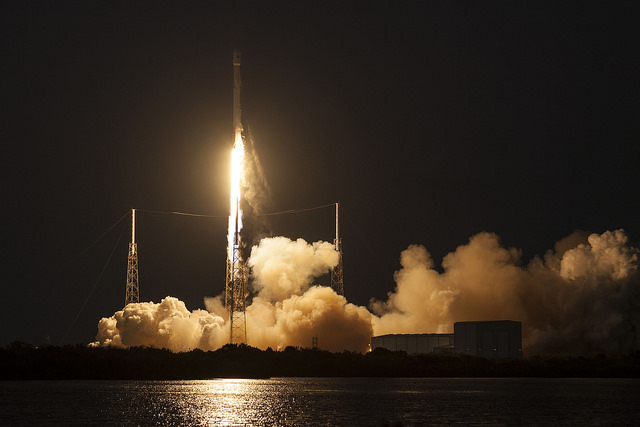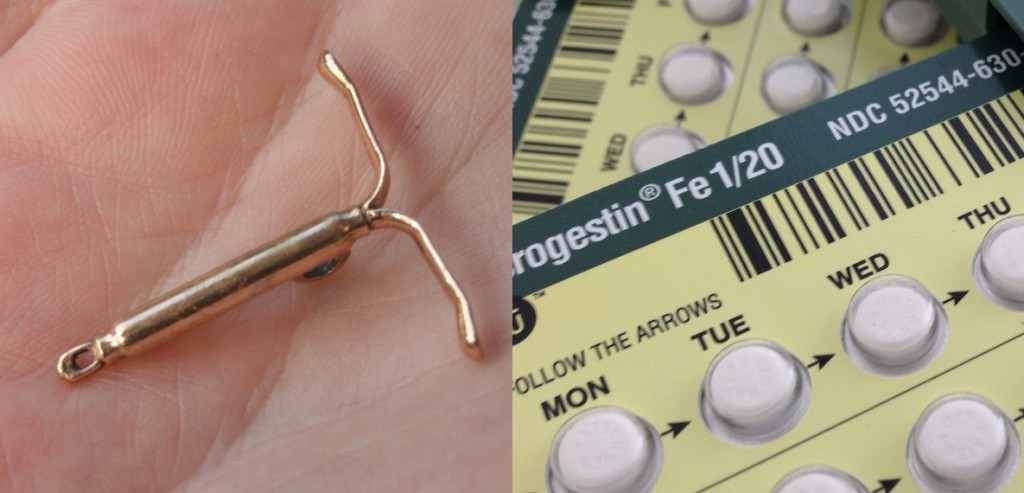
From astronaut Scott Kelly’s return to Earth, to SpaceX’s latest success, to our lowest-ever unplanned pregnancy numbers, we’ve got the best of the week’s news for your perusal. Read on!
***
Welcome Back, Scott Kelly

Astronaut Scott Kelly returned from the International Space Station this week after nearly a full year (340.4 days) in low Earth orbit. Crazy though that may be, it doesn’t break any all-time records, though it does raise the bar for Americans. Back in October, Kelly broke the record for the most cumulative time spent in orbit by an American when he hit 381 days (and change), and now at 520 days (again, cumulative), he’s far and away spent the most time in space for an American (Michael Fincke is down at 381). But let’s not forget that for years Russia operated its own space station, Mir, with a much more limited pool of astronauts. Cosmonaut Gennady Padalka, thanks to a nearly 200-day stay on Mir, plus a further four missions to the ISS, currently holds the record for cumulative time in space at a whopping 878.48 days! Another cosmonaut, Valeri Polyakov, holds the record for longest single space flight, from when he spent from January 1994 to March 1995 on board Mir — 437.7 days. Kelly’s extended visit to space does have a special marker however: leaving his twin brother Mark here for that duration will really allow for some fascinating study of the effects of space travel — there’s nothing like being able to control for variables. He can expect a few things now that he’s back on terra firma, including probably a whole lot of aches and pains as his body (probably) loses those two inches he grew up there. He’ll probably have weaker bones and weaker muscles, and will have to get used to living, once again, at the bottom of a gravity well. Astronaut Chris Hadfield famously said that the first thing he noticed upon his return in 2013 was the weight of his lips and the way it affected his speech. Check out NASA.gov for more on Kelly’s return.
Video: NASA
Fifth Time’s A Charm

After four scrubbed launch attempts (including a very last-second pad abort) caused by a mixture of factors like high winds, a boat straying into the range, and oxygen temperature difficulties, on Friday night a SpaceX Falcon 9 “FT” carried the SES-9 communications satellite up into geostationary transfer orbit (GTO), where it will pend the next few weeks using a variety of thrusters to position itself for use. Part of the reason for the delays was an abundance of caution surrounding those two little letters after the name of the rocket. “FT” stands for “Full Throttle,” and is achieved by supercooling the liquid oxygen (or LOX) in order to get as much of it into the rocket (and, again, out of the rocket again) as possible. That last-second abort was due to an automated low-thrust alarm, the result of the supercooled LOX not having been as super-cooled as necessary after sitting on the pad for too long while they cleared the range. The FT specs are likely to be the most powerful a Falcon 9 will get, especially if SpaceX’s Falcon Heavy enters into service as planned. Pushed to its limit, the F9FT can get 5300kg (11,700lb) to GTO, or 13150kg (28990lb) to low Earth orbit (LEO) where the ISS is; the Falcon Heavy should be able to take 21200kg to GTO or a whopping 53,000kg to LEO. Can’t wait, Elon.
A Future of Planned Parenthood (Literally)

Vox is reporting this week that unintended pregnancies are at an all-time low, possibly thanks to a combination of factors including increased access of certain types of contraceptives and decreased costs for the consumer. Apparently, the use of a class of contraceptives known as LARCs (Long-Acting Reversible Contraceptives), which includes IUDs and subcutaneous hormonal implants, is on the rise, with use tripling since 2007. This could be having an effect because, unlike daily contraceptives, which have a failure rate of roughly 9% according to the CDC, LARC failure rates are just 0.05% to 0.8%. And where they used to cost the user more — because the upfront costs are higher, even if the averaged-out costs are lower — they’re now required to be free under the Affordable Care Act, which may be allowing for more women to take advantage of the convenience and ease of use. Whatever the reason, it’s a good thing. Even if you don’t like contraceptives, you have to admit that fewer unintended pregnancies will mean fewer abortions. Check out Vox for more.
ICYMI
In case you missed the stories here this week, here they are in handy point form:
- On Monday, I once again warned you not to trust anyone named Avocado
- On Tuesday, I shared some good news about HPV vaccines
- On Wednesday, we had a moment of silence for Mythbusters, which ended yesterday
- On Thursday, I shared the story of an oddly-worded paper in PLOS One, and
- On Friday, Lindsey talked about normalizing menstruation
If you missed any, go check them out now!
Best of the Rest
- Samsung’s making a 256GB memory chip for your next smartphone
- Scientists have made a good suggestion for how to look for ET: look for who might be looking back
- ARPA-E thinks it’s funded the next generation of batteries and that we could see them in ten years
- The Hubble has seen the most distant galaxy ever, and
- We may know what one Fast Radio Burst is likely to be, but what about the one that repeated ten times?
I leave you now with a video of a Japanese robot that will ride on your shoulders and feed you tomatoes… while you run.
That’s all for this week. Remember, I only get paid in my own (and your) enthusiasm, so please like This Week In Tomorrow on Facebook, follow me on Twitter @TWITomorrow, and tell your friends about the site! Have a great week.
